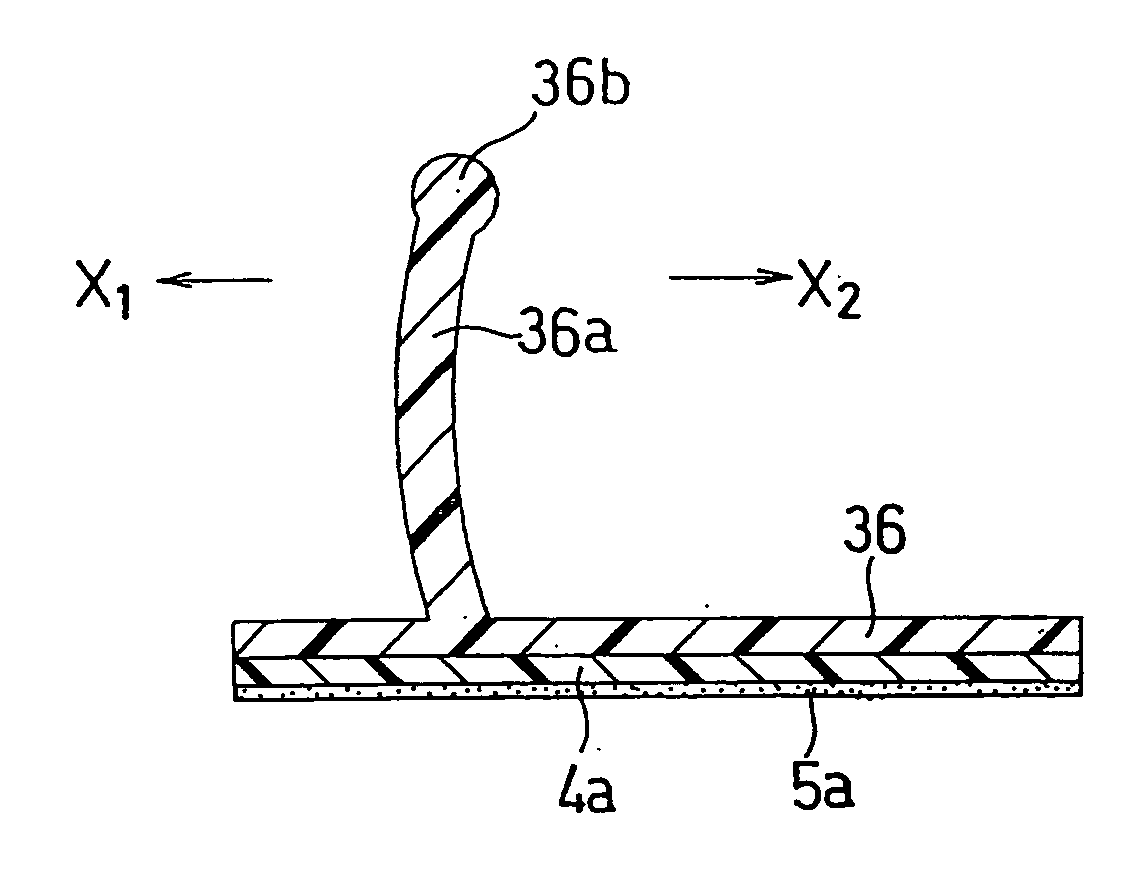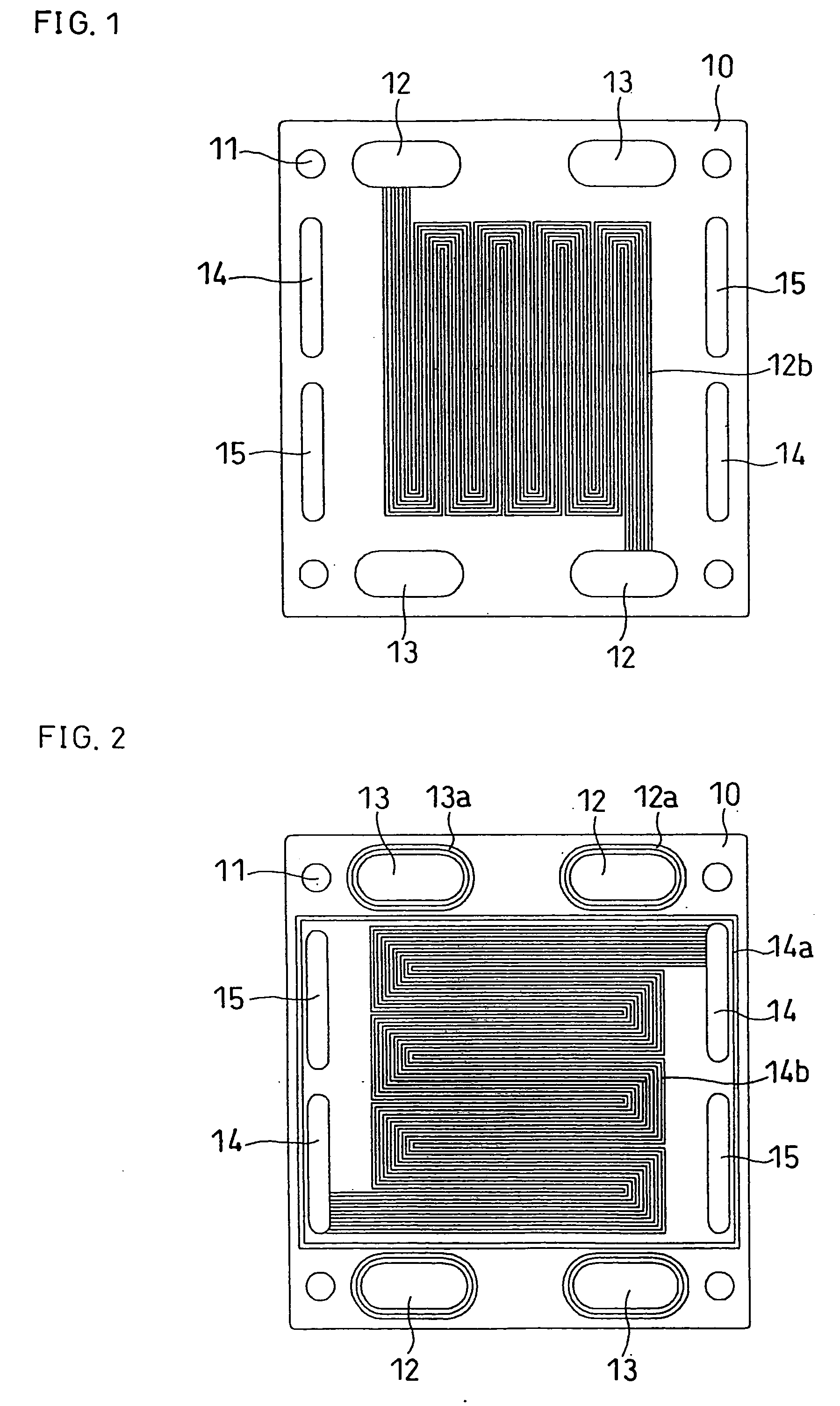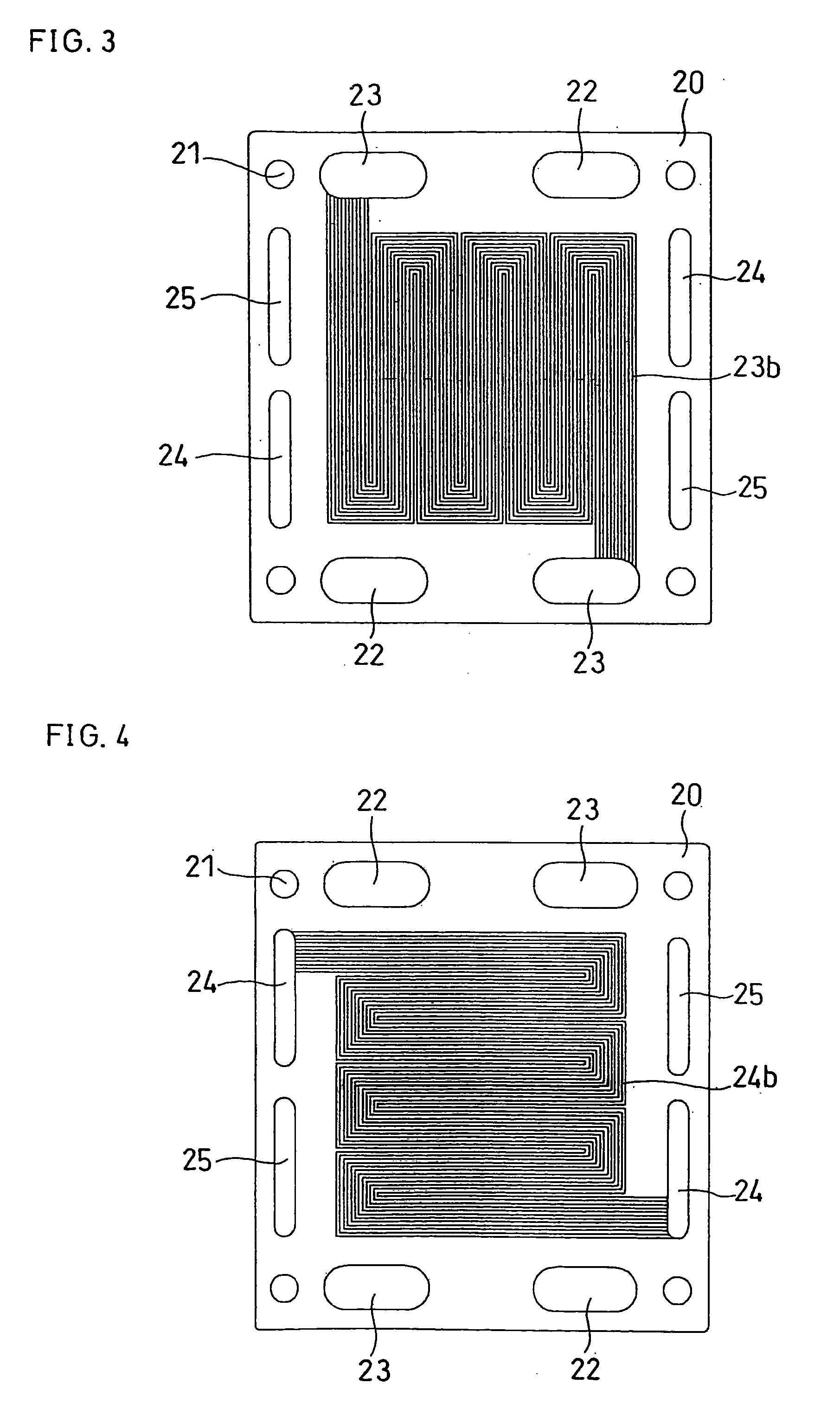Polymer electrolyte fuel cell
- Summary
- Abstract
- Description
- Claims
- Application Information
AI Technical Summary
Benefits of technology
Problems solved by technology
Method used
Image
Examples
example 1
[0109] (i) Production of Separator Plate
[0110] Using an isotopic graphite board, the anode-side separator plate shown in FIGS. 1 and 2 of Embodiment 1 and the cathode-side separator plate 20 shown in FIGS. 3 and 4 were produced by mechanical process. The separator plate had a thickness of 3 mm, and the grooves of the gas flow channels and the cooling water flow channels had a pitch length of 3 mm and a width of 1.5 mm.
[0111] (ii) Production of Sealing Member
[0112] The linear sealing member 30 and the flat sealing member 40, each having the same adhesive layer as that of Embodiment 1 shown in FIGS. 5 to 8, were produced.
[0113] After placing polyimide films 4a and 4b with a thickness of 100 μm on a mold, the mold was cramped and fluorine rubber (“Viton”, fluorine rubber, manufactured by E.I. Du Pont de Nemours & Company Inc.) was projection-molded under conditions of a temperature of 200° C. and projection pressure of 150 kgf / cm2, to form the prescribed base sealing members 36 and...
example 2
[0144] The same anode-side linear sealing member 56 as that of Embodiment 2, shown in FIGS. 9 and 10, was produced by injection-molding fluorine rubber in a prescribed mold. Herein, the rib-shaped sealing member 56a on the linear sealing member 56 had a thickness of 0.25 mm, and was disposed in the vertical direction to the anode-side separator plate at a curvature of a radius of 2.5 mm and an open angle of 35 degrees. The plate-shaped sealing member 56b on the anode-side linear sealing member 56 had a thickness of 0.15 mm and a width of 3 mm.
[0145] A unit cell was produced in the following manner using the same members as in Example 1, except for the use of the above-obtained linear-sealing member 56 in place of the linear sealing member 30 of Example 1.
[0146] The procedure for assembling the unit cells will be described below.
[0147] A prescribed jig for assembly with the guide pin standing thereon was placed, and the cathode-side separator plate having the cathode-side flat sea...
example 3
[0159] The linear sealing member 56 was produced in the same manner as in Example 2, except that the thickness of the rib-shaped sealing member 56a on the anode-side linear sealing member 56 of Example 2 was made as thin as 0.15 mm.
[0160] Further, the linear sealing member 56 was coated with an adhesive agent. As the adhesive agent used was a copolymer of styrene and ethylenebutylene. After a toluene solution including the styrene-ethylenebutylene copolymer was applied to the linear sealing member, toluene as the solvent was removed in a drying furnace set to 50° C.
[0161] The linear sealing member 56 was disposed on the anode-side separator plate 10, which was then hot pressed while a teflon sheet was placed thereon so that the linear sealing member 56 was press-attached to the separator plate 10. Herein, the temperature was 100° C., the press load was 2000 kgf and the pressurizing time was 1 minute.
[0162] Except for the use of the anode-side separator plate 10 having the above-o...
PUM
 Login to View More
Login to View More Abstract
Description
Claims
Application Information
 Login to View More
Login to View More - R&D
- Intellectual Property
- Life Sciences
- Materials
- Tech Scout
- Unparalleled Data Quality
- Higher Quality Content
- 60% Fewer Hallucinations
Browse by: Latest US Patents, China's latest patents, Technical Efficacy Thesaurus, Application Domain, Technology Topic, Popular Technical Reports.
© 2025 PatSnap. All rights reserved.Legal|Privacy policy|Modern Slavery Act Transparency Statement|Sitemap|About US| Contact US: help@patsnap.com



